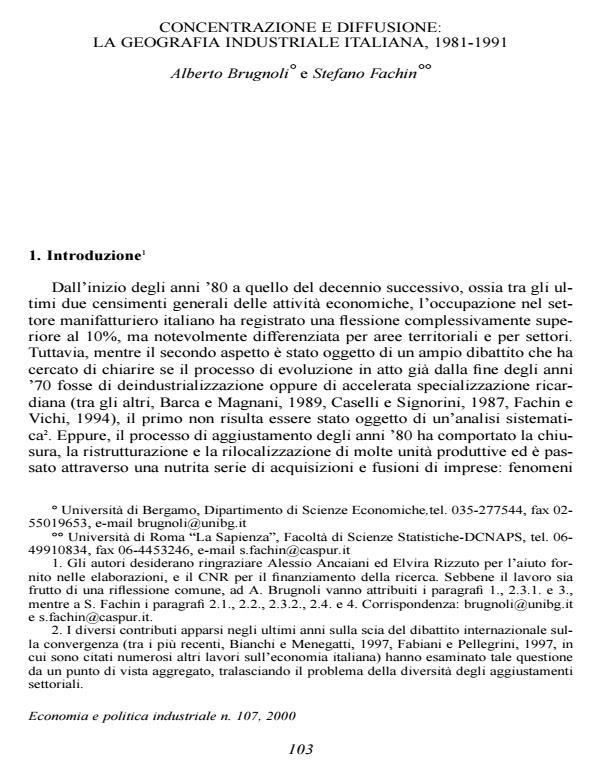Concentrazione e diffusione: la geografia industriale italiana 1981-1991
Journal title ECONOMIA E POLITICA INDUSTRIALE
Author/s Alberto Brugnoli, Stefano Fachin
Publishing Year 1 Issue 2000/107
Language Italian Pages 25 P. File size 84 KB
DOI
DOI is like a bar code for intellectual property: to have more infomation
click here
Below, you can see the article first page
If you want to buy this article in PDF format, you can do it, following the instructions to buy download credits

FrancoAngeli is member of Publishers International Linking Association, Inc (PILA), a not-for-profit association which run the CrossRef service enabling links to and from online scholarly content.
The aim of this paper is to examine the industrial geography of Italy on the basis of the employment data of the last two general censuses (1981-1991). Having first shown how maps in the geographical concentration-geographical autocorrelation space may help in distinguishing industries according to their localization patterns, we constructed such maps for 13 manufacturing industries (NACE rev. 1 classification). The conclusions reached are that three main patterns seem to have driven the localization trends over the period of interest: 1) a first pattern leads a small number of distinct centres, each extending over a few neighbouring provinces, and applies to industries including companies of small average size (Textiles, Apparel and Leather, Rubber and Plastic, Machinery, Fabricated Metal, Stone). The concept of Marshallian district seems to be highly relevant for this localization pattern; 2) a second pattern leads a very small number of distinct, single-province, centres, and applies to industries including companies of large average size (Paper and printing, Chemicals, Petroleum, Electrical machinery, Transportation equipment), possibly suggesting the existence of a centre-periphery mechanism driven by returns to scale still in action; 3) finally, a third pattern is relevant for industries with small companies (Food and Timber), which appears to cluster in a large number of non-neighbouring provinces, possibly confirming Weber’s (1929) view of the localization patterns as mostly driven by distance from raw materials sources and markets.
Alberto Brugnoli, Stefano Fachin, Concentrazione e diffusione: la geografia industriale italiana 1981-1991 in "ECONOMIA E POLITICA INDUSTRIALE " 107/2000, pp , DOI: